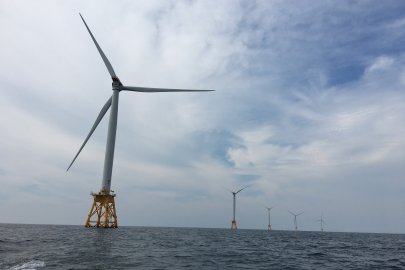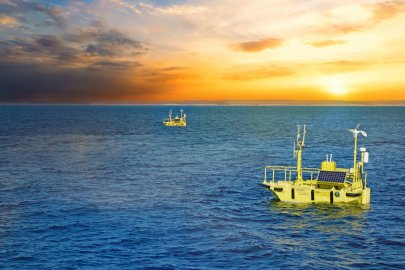As part of DOE’s A2e initiative, wind energy scientists share data and provide information to wind power plant owners and consultants who need to make informed decisions on types of technologies to be deployed and where to locate wind turbines.
Wind Energy Technologies Office
June 2, 2021Data Archive and Portal reaches user milestone, lends critical capabilities to wind projects
As part of DOE’s Atmosphere to Electrons (A2e) initiative, wind energy scientists share data and provide information to wind power plant owners and consultants who need to make informed decisions on types of technologies to be deployed and where to locate wind turbines.
Those data—which stretch from the beginning to the end of each wind energy project—are stored in A2e’s Data Archive and Portal (DAP). Managed by DOE’s Pacific Northwest National Laboratory (PNNL), the DAP is designed to collect and share massive amounts of experimental and computational results generated by A2e research. Under this program, the wind research community, wind plant owners, consultants, and wind turbine owners enjoy open access to public data and, as may be needed, have secured access to shared proprietary data.
Growing Community, Growing Features
Launched in 2015, the DAP recently passed a major milestone—1,000 registered users who have contributed more than 240 terabytes of wind research data from 20 registered projects. According to PNNL scientists who work closely with the DAP, that is the equivalent of around 40,000 high-definition movies.
The DAP adheres to the FAIR guiding principles for scientific data management and stewardship—meaning it is findable, accessible, interoperable with other data, and reusable. The platform’s capabilities include the ability to visualize and download data in near real time, such as when the DAP began receiving data from buoys stationed off the California coast this past fall to support the Bureau of Ocean Energy Management, which is evaluating the leasing of wind sites.
“The data visualizations are providing a means to more easily interpret the buoy data and identify trends and environmental phenomena that might impact potential wind energy projects,” said Alicia Gorton, the PNNL ocean engineer overseeing the buoy deployment. “A new metadata guide called Data Dictionary featuring data from the offshore buoy project will be available soon in the DAP and will help users easily interpret the data and understand how it was collected.” In addition to the Data Dictionary for buoys, the DAP has established similar standards for other wind data.
The DAP’s visualization capability was also an integral part of the second Wind Forecast Improvement Project, or WFIP2. The four-year multi-institutional study provided information on how to improve wind forecasting in complex terrain, where circulation and flow make predictability especially challenging.
“The visualization was key because it would not have been practical to manually review the many thousands of files produced during the study,” said PNNL scientist Will Shaw, who served on the WFIP2 team. “The tool allowed for quick selection of relevant variables and time periods from instruments of interest and helped the team quickly and effectively focus on the analysis needed to improve the forecasting models.”
The result of WFIP2 was a new algorithm that improved the timing accuracy for erosion of cold pools—regions of relatively cold, calm air that are particularly common in winter. The algorithm has since been included in the National Weather Service’s operational forecast models on which many wind power forecasts are based.

The Data Archive and Portal, launched in 2015 and managed by Pacific Northwest National Laboratory (PNNL), recently passed a major milestone—1,000 registered users―who have contributed more than 240 terabytes of wind research data available to the entire community. Photo composite from Ocean Tech Services, LLC, and Shannon Colson, PNNL
Tools for Big Data
New projects with large amounts of data, including the American WAKE ExperimeNt (AWAKEN) and Wind Forecast Improvement Project 3, will benefit from DAP capabilities such as automatic data standardization, visualization, and instrument monitoring.
The AWAKEN study will use scanning radars, lasers, and aircraft—each providing a unique and complex data type—to map the details of wakes downwind of wind turbines. The ability to combine these data to obtain a full picture of how wakes behave will allow the research team to improve wind plant controls and optimize power capture. The DAP team is developing a new tool to monitor data flow and instruments in near real time. This improvement will assure the AWAKEN team that their instruments—critical to providing wake information—are functioning properly to collect the most useful data.
“These large projects are bringing in the data that are helping the wind industry develop the most effective technologies and make decisions on where to locate wind power plants, so that they can bring a source of inexpensive, clean power to the consumer,” said Chitra Sivaraman, the PNNL scientist who oversees the DAP. “We continue to support the industry and the wind research community by developing the tools they need to make the best use of these valuable data.”
Subscribe to learn more about WETO R&D projects, news, accomplishments, and recent publications.
Subscribe to the WETO e-newsletter to stay informed on the latest wind energy news, events, publications, and updates.










